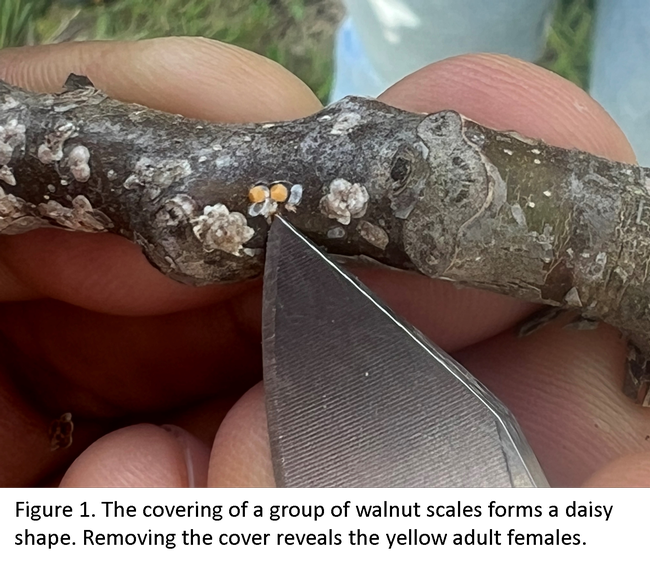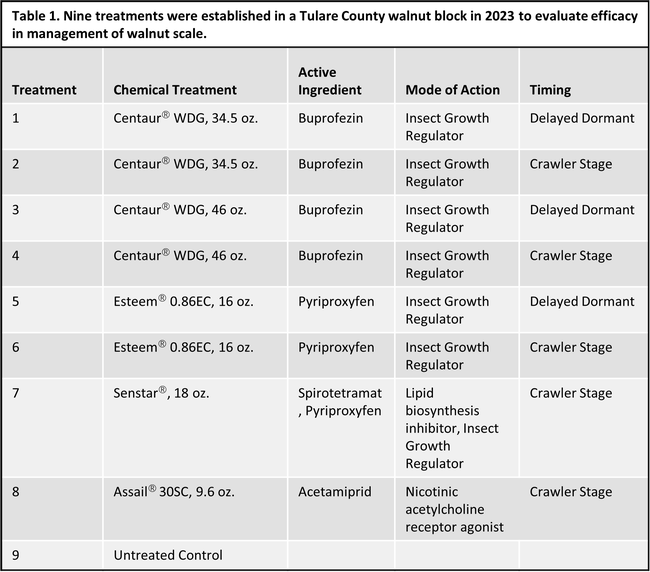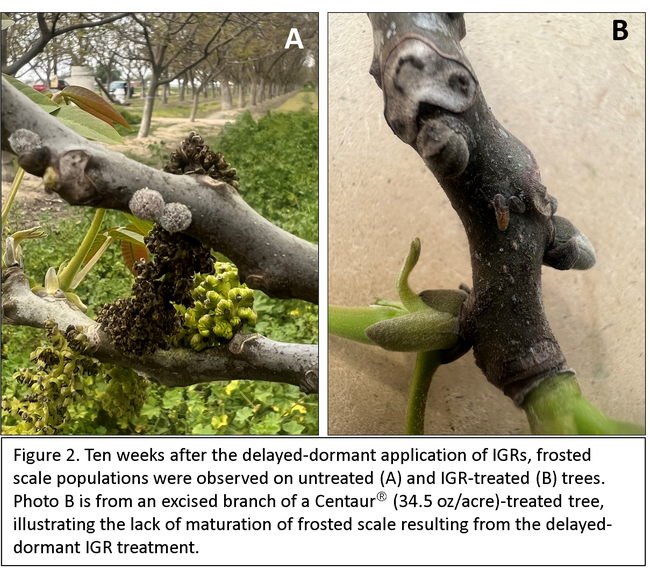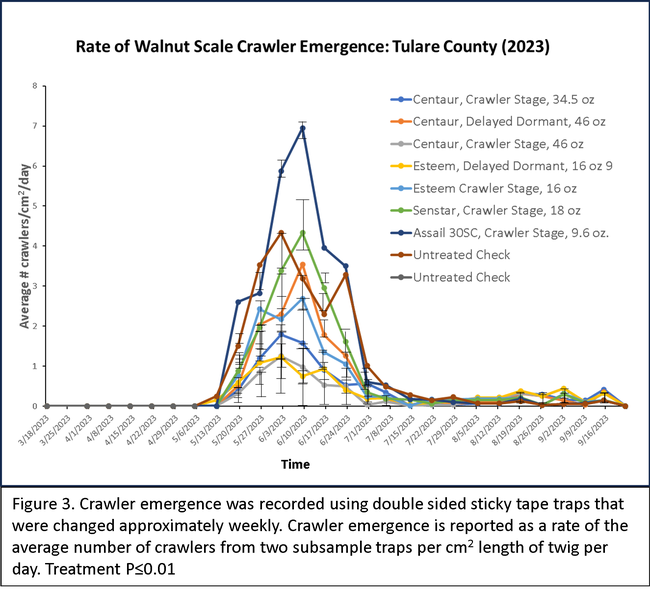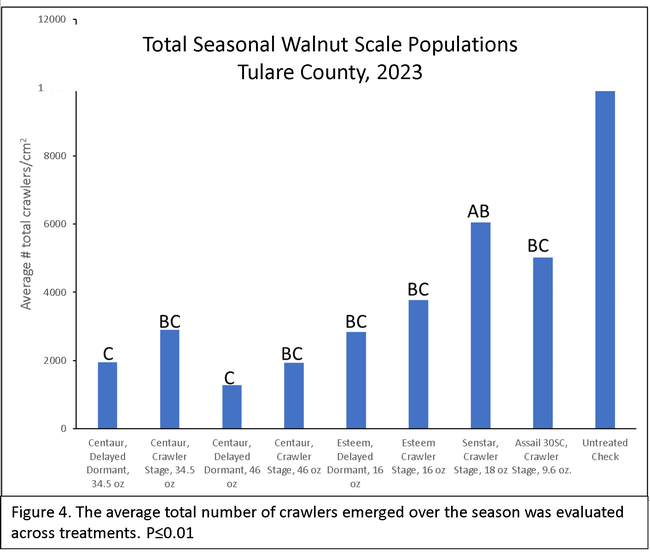- Author: Elizabeth J Fichtner
- Author: Mel Thayer
- Author: Robert Van Steenwyk
Walnut scale (Figure 1) is an important economic pest of walnuts in California. High populations of walnut scale may affect tree vigor as well as predispose trees to diseases caused by several plant pathogenic fungi and possibly flatheaded borer damage. Historic UC Pest Management Guidelines emphasize the efficacy of insecticide applications at the crawler stage of insect development (late April to mid-May); however, with the introduction of new pest management tools such as insect growth regulators (IGRs), new studies have been conducted to evaluate the efficacy of these products at earlier times during the insect lifecycle. Both walnut scale and frosted scale overwinter as immature nymphs; therefore delayed-dormant application of IGRs has the potential to inhibit maturation and subsequent reproduction of these pests.
In 2023, UC ANR and UC Berkeley researchers initiated a new collaborative study investigating the efficacy of four products applied at various rates and times (Table 1). Two insect growth regulator products, Esteem® (IRAC Group 7C) and Centaur® (IRAC Group 16), were included in the study, with both delayed-dormant (February 8, 2023) and crawler-stage (April 26, 2023) application timings. Centaur® was also investigated at two rates. Crawler-stage applications of Senstar® (a combination of spirotetramat and pyroxifin) and Assail 20SG® (a neonicitinoid) were also included in the study.
Delayed dormant IGR applications inhibit maturation of walnut and frosted scale. Delayed-dormant application of Centaur WD® at either 34.5 oz/acre or 46 oz/acre reduced walnut scale survival by 81% of that of untreated control treatment by April. Both Esteem and Centaur reduced populations of mature frosted scale observed in late April by the over 85% of that on untreated trees (Figure 2).
Crawler populations affected by IGRs and conventional insecticides. All treatments suppressed the rates of crawler emergence over time in comparison to the untreated control (Figure 3); however, delayed dormant applications of both IGR treatments (Centaur® and Esteem®) resulted in the highest suppression of the first-generation curve (Figure 3). Both rates of Centaur® applied during the delayed dormant period resulted in similar suppression of crawler emergence. Crawler stage application of Centaur® at the higher rate resulted in similar levels of crawler suppression as the delayed dormant IGR treatments (Figure 3). Moderate suppression of first-generation crawlers was observed with crawler stage treatments with the low Centaur® rate, Esteem®, and Assail® 30SG (Figure 3). Crawler stage application of Senstar® suppressed first-generation crawler emergence (Figure 3) and resulted in modest suppression (45%) of total crawler populations across the season as compared to the untreated control (Figure 4). All IGR treatments, regardless of the rate or timing, performed similarly with regard to total crawler populations across the season (Figure 4). The range in total crawler suppression across treatments of similar statistical significance was 88.2% (Centaur, 46 oz/acre, delayed dormant) to 54% (Assail, crawler stage), illustrating the variability in crawler counts in the orchard system (Figure 4).
Summary. Delayed dormant applications of either of the insect growth regular products, Centaur® or Esteem®, offer excellent suppression of walnut scale and frosted scale populations. Delayed dormant applications may offer similar efficacy at lower product rates due to the opportunity to achieve better coverage prior to leaf-out. Additionally, delayed dormant applications of these products may inhibit maturation of nymphs into adults, thus limiting sexual reproduction and subsequent laying of eggs.
In prior studies, the efficacy of crawler stage Assail® application became apparent the year following application. Based on this background information, the populations of adult walnut scale will be evaluated across all treatments in April 2024 to fully capture the efficacy of these products over time.
Additionally, future studies are planned to further determine the value of dormant versus delayed dormant applications of IGR treatments for management of walnut scale. The results of the current study, however, do demonstrate a need for updating the current UC IPM guidelines for management of walnut scale. To date, the UC IPM guidelines only recommend crawler-stage applications of IGR products while the current study demonstrates the value of IGR applications earlier in the season.
